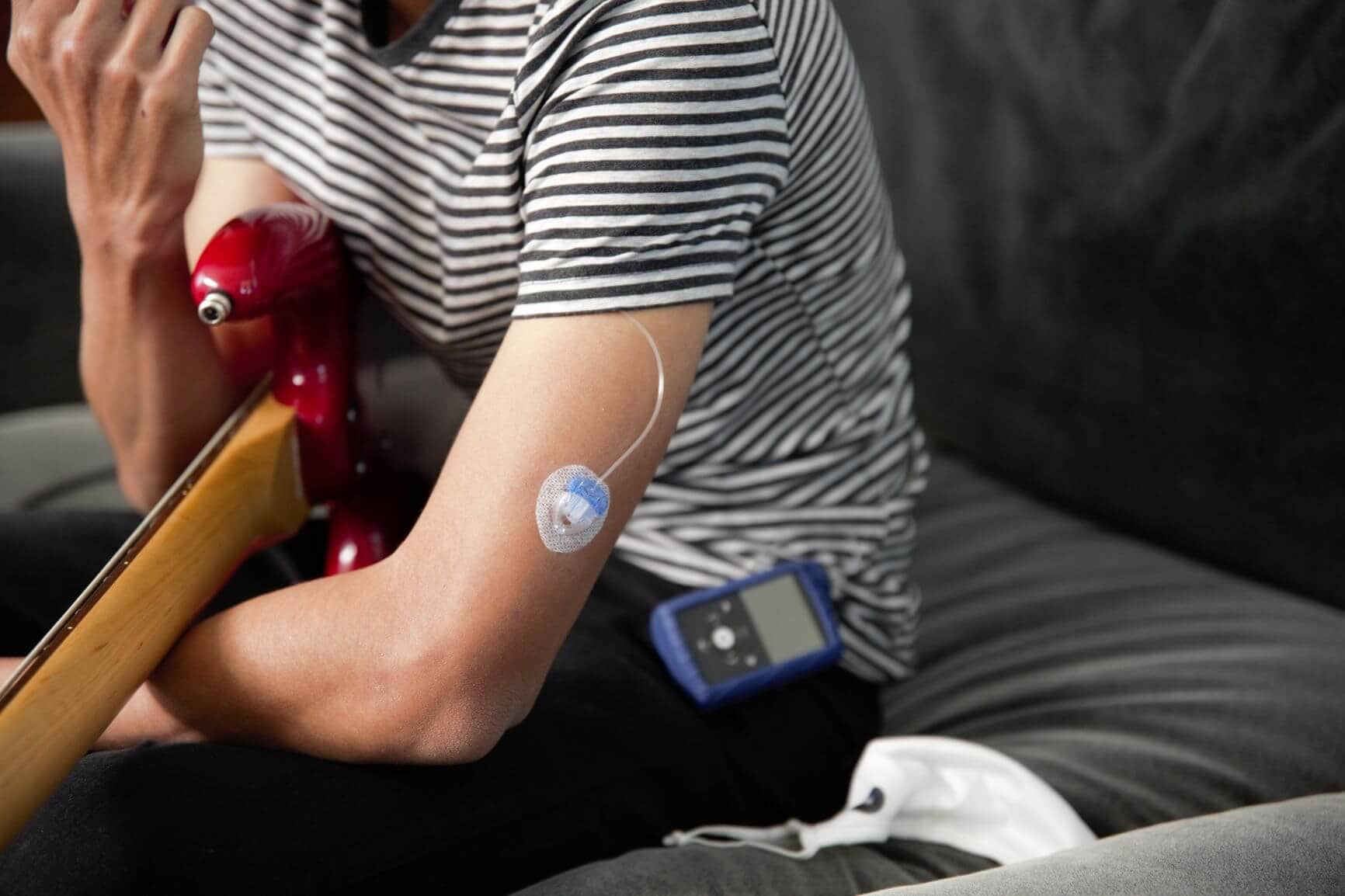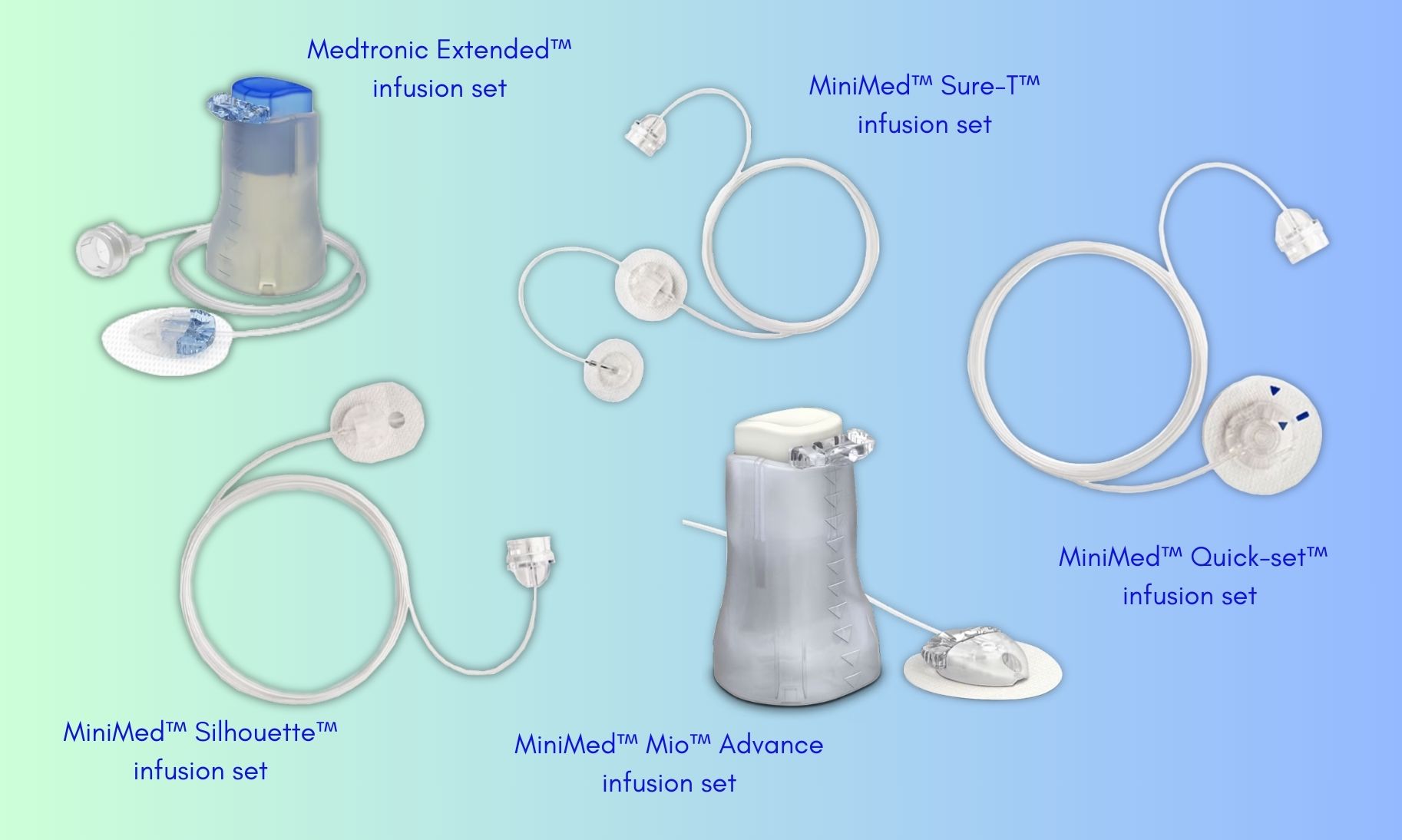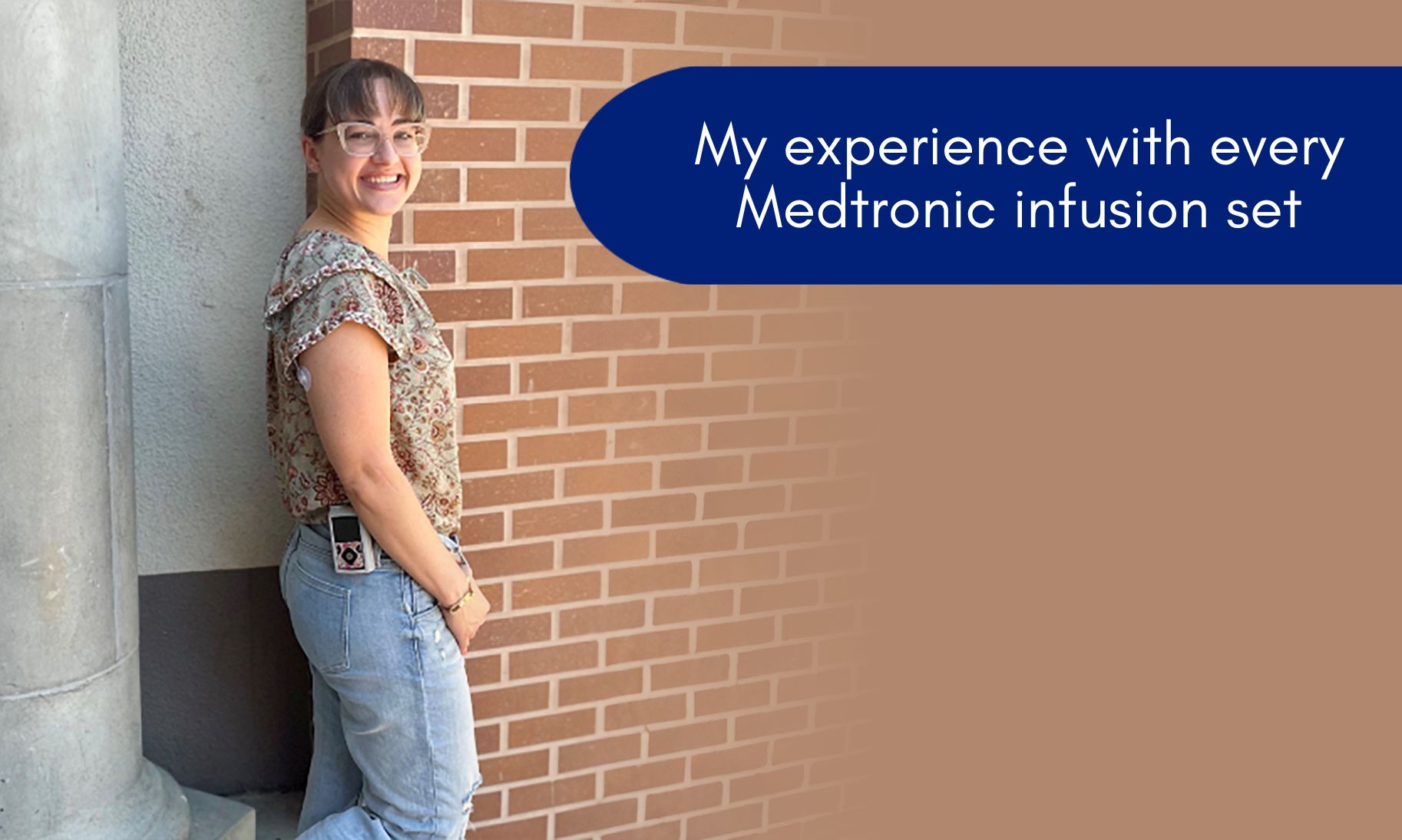4 tips for infusion set and sensor site rotations

When I started the MiniMedTM 530G with EnliteTM, I committed to wearing the EnliteTM sensor all the time. When I wore the Sof-sensor, I took occasional sensor breaks, but now with EnliteTM, I didn’t want to continue that same habit.
I quickly found it was important to use my “real estate” wisely when it came to wearing two sites 24/7. Here are some tips I have learned along the way that might help you with infusion set and sensor site rotations. I call it the “S.P.O.T. method”.
(S) Site Location
The stomach is a very common place to wear an infusion set and one of the main areas that I have used for years. I initially started wearing my sensor and my infusion set in my stomach (making sure they were an inch away from another), but I found it to be too much space taken up on my skin with not a lot of flexibility to rotate. So after talking with my doctor, we decided to dedicate my stomach to sensors only (at least for now).
For my infusion sites, I rotate between my thighs, arms, and back/love handles. Saving my stomach for my sensor allows ample time for my sites to heal and skin to remain healthy during the six day sensor wear.
Before I insert a sensor or infusion set, I think about all the locations I can insert them, often choosing a site based on the answer to these questions:
- Where did I insert last? (Choose a different spot)
- What types of activities am I planning on for the next 3 days? (Activities like working out might change placement)
- What kinds of clothes will I be wearing for those activities? (Beach day or formal events mean different outfits so I choose a different spot)
-
Are any of the following true for the selected spot: a skin fold, scar tissue or overused site, too close to the belt line? (Don’t use those areas for sensor or infusion set insertions!)


(P) Pump Placement
When I started rotating my sensor sites and infusion sets, I occasionally lost communication between my pump and sensor. Tempted to always insert my sensor and infusion set on the same side of my body so that my pump could be clipped within a closer range, I got creative. Now, I stick with my rotation schedules and don’t wear my sensor and infusion set on the same side all of the time. Instead, I clip my pump on the same side of my body my sensor is placed, not my infusion set. Sometimes my infusion set will be on my right thigh and my sensor will be on the left side of my stomach, so I simply pull the tubing over, and clip my pump on my left side (This is where my mid-to longer infusion set tubing length comes in handy). This removes one more barrier when planning my insertion sites.
(O) Orientation
I was trained to have my sensor inserted horizontally on my stomach, but recently discovered that it can also be worn vertically with the transmitter on top of the sensor, too. By changing the insertion orientation, the sensor is at a different angle, using a slightly different area of the skin. I now swap my sensors from one side to another each time I change my site, and I change the orientation.
You can do this with your infusion sets, too. Do you prefer tubing pointing up, down, or sideways? I have found that by finding the right way to insert, depending on body locations, it can make the insertion more comfortable while allowing for more site options.
(T) Track
Keep track of your insertion sites, and come up with a method or tool that can help remind you. When I first started on the pump, I manually wrote notes in my log book for where I wore my sites. ( I’ ve also heard of people who mark this down on their calendar or use reminders on their phone. ) But after a few years I became used to the practice of rotating so no longer needed to manually write it down. I just made a decision to be thoughtful of choosing my sites, and I mentally am able to recall where I should do my next sensor or infusion set insertion based on my last few spots.
For infusion set site rotation, Medtronic recommends the “clock” or “M/W Rotation” methods on your abdomen.
|
|
|
Since I no longer wear my infusion set on my stomach, I rotate by choosing a different body part/side of my body when inserting a site. For example, if I wear my infusion set on my right arm today, then in 3 days I will use my left arm. I use the “M/W Rotation” as a guide for my sensors, but I always make sure that there is are at least two inches between my sensor and belly button (it’s the same rule for infusion sets if you wear them here too.)
Sometimes it just takes a little thought and trying different things to find exactly what works best for you. What helps you with site rotation? Let me know in the comments below!






Blog comments
Jennifer, the Guardian Sensor 3 sensors are only approved by the FDA for use in the abdomen and upper arm. Many times, this is related to the specifics of the clinical studies.
Any suggestions for preventing skin ripping off from the glue of the infusion sets? My son has not been able to fully use his sensor capabilities of his pump due to his skin ripping off every time he tries to change the sensor.
Ouch, Melissa. I'm sorry to hear this. Have you connected with our technical support team? They can provide suggestions and may be able to send him some new tapes to try. Please give our team a call at 800.646.4633 option #1.
I put in a new Guardian 3 sensor today per my doctors recommendation since I cannot use the right side of my abdomen due to scar tissue from multiple surgeries. There is quite a lot of blood around the sensor. Is this an issue?
Jeannie, I'm sorry for the delay in replying. This is a good question for our technical support team, as the amount of blood could have an impact on sensor performance. Please give them a call at your convenience at 800.646.4633, option 1.
Pagination
Post a new comment
Required fields are marked *